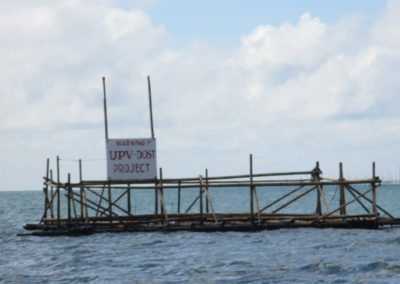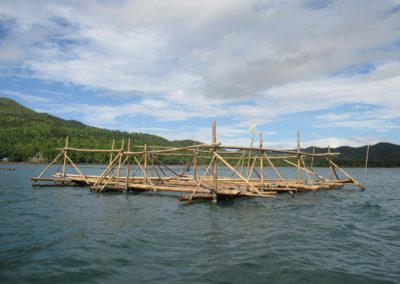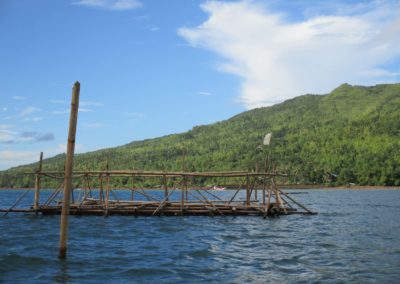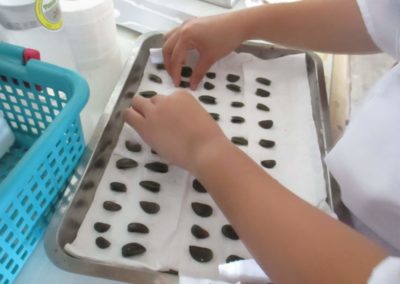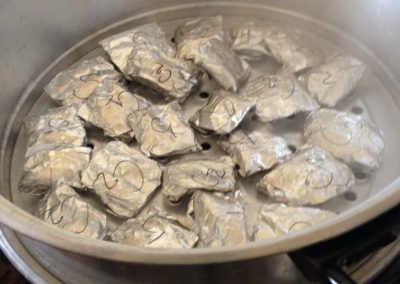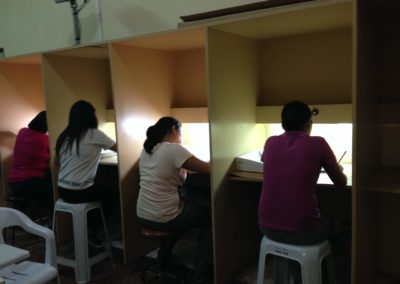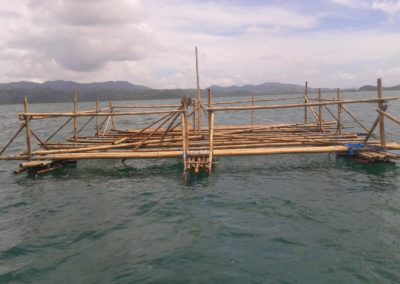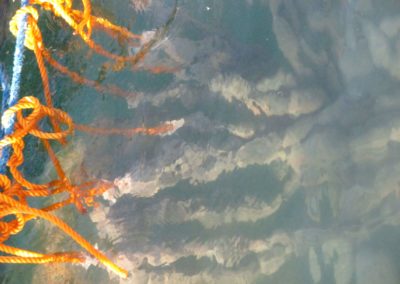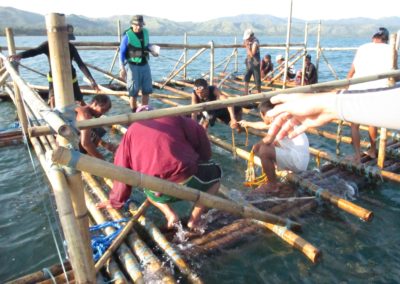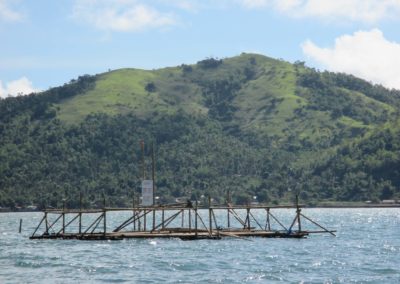Raft and long-line culture of green mussel, Perna viridis (B2_1)

Dr. Carlos C. Baylon
Institute of Aquaculture
College of Fisheries and Ocean Sciences
UP Visayas
ccbaylon20@yahoo.com

Dr. Diony Cahilig
Capiz State University (CapSU)
dionycahilig@yahoo.com

Prof. Renato Diocton
Samar State University (SSU)
rdiocton2004@yahoo.com
Project Description:
The mussel longline is a modified and cheaper version of the longline culture system used by New Zealand for producing high quality mussel. The method is suitable for deeper waters and may be used to replace the stake method which causes heavy sedimentation in coastal areas.
The longline culture system is composed of a 50-meter main line made of 20-mm polypropylene rope. Attached in the main line are black plastic containers (40 cm x 35 cm x 19 cm) used as floats which are discarded materials used for transporting oil and soy sauce. On both ends of the line, two plastic containers (91 cm x 37 cm) covered with polyethylene rope are used. To maintain the longline, anchors (60” x 50 x 40”) are placed on both sides. For stocking, hanging lines made of 2 to 5 meter long, 10-mm polyethylene rope weighted down by 1 kg cement sinkers. The length of the hanging lines maximizes the productivity of the water column. Mussel spats, 2-3 cm in length, are packed in the hanging lines using mussel sock at 200 pieces per meter. Mussel socks are typically made of red onion sacks or cotton gauze. The hanging lines are tied to the longline at 50-cm interval.
Benefits
- Limits sedimentation and reduces damage to coastal environment
- Can be used in deeper waters
- Produces high quality mussels
- Will modernize mussel industry
Target Beneficiaries
- Mussel farmers
- Fisherfolk
Locations
- Iloilo, Capiz, Aklan, and Samar

